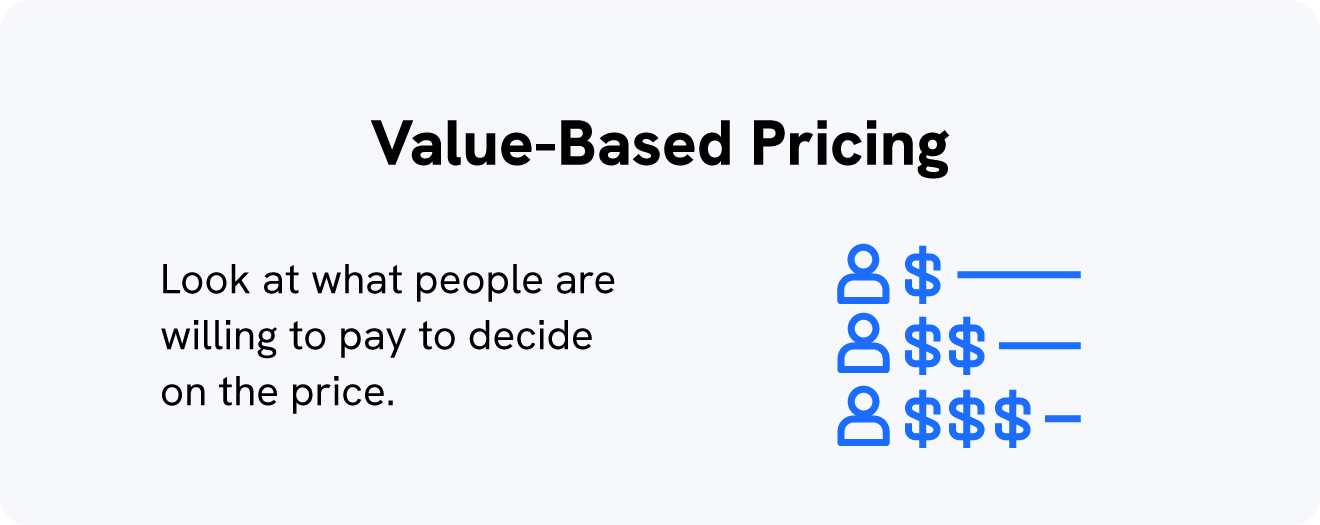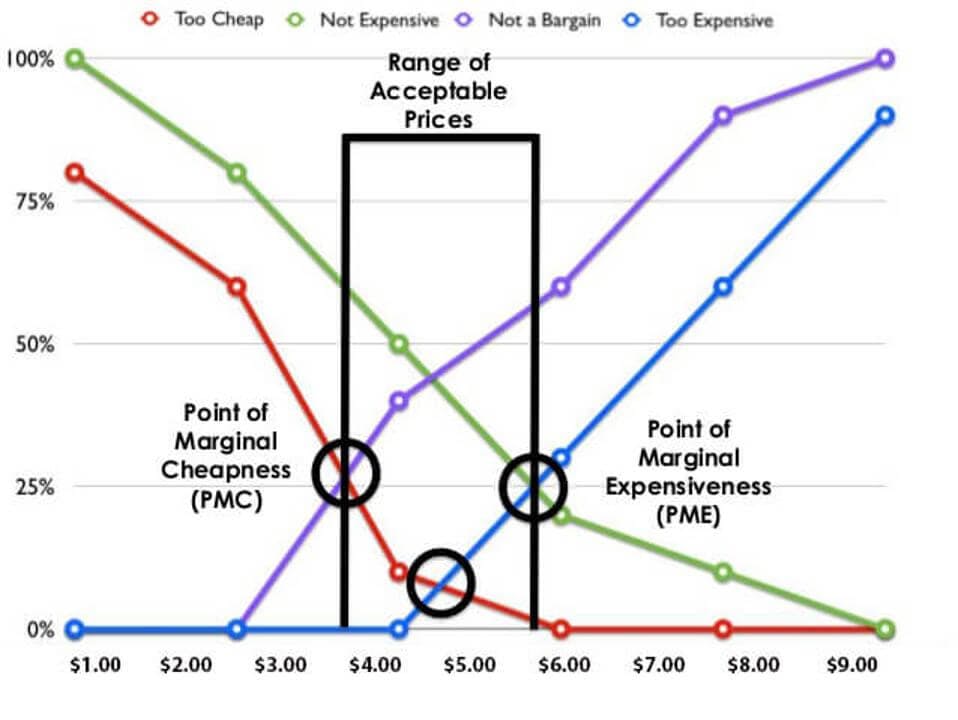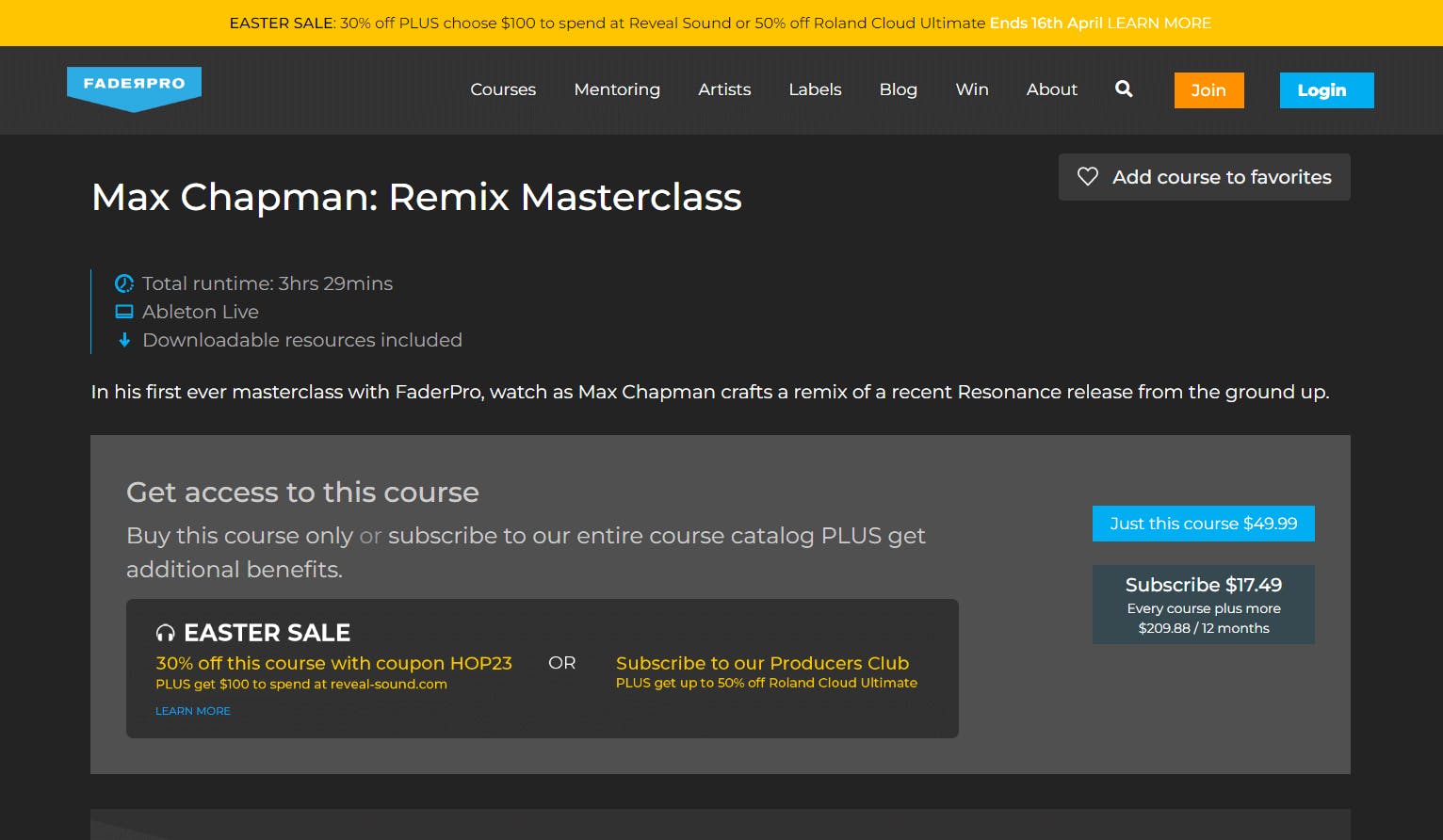FREE TOOL: Easy Membership Pricing Calculator
Membership Pricing Made Easy
Skip the guesswork and instantly uncover a ‘sweet spot’ price for your membership! Powered by nearly 10 years of market data, we developed this easy-to-use tool that asks you 4 simple questions about your audience size, revenue goals, and niche — and spits out a specific, proven price suggestion in seconds! No opt-in required; no obligations.
Price Your Membership in 3 Easy Steps
Now there's an easy way to avoid charging too much — or too little — for your membership. Harness nearly 10 years of membership data to compute a specific price that’s proven to work in your niche, in seconds. Price your membership for success in 3 simple steps:
Define Your
Revenue Target
Select an income goal that’s ambitious yet achievable, ensuring it aligns with your broader objectives. Our tool reverse-engineers a price — factoring in your audience size and a typical conversion rate in your niche — to help you meet or exceed your target.
Select Your
Industry Vertical
Your niche significantly impacts how much you can realistically charge. Each industry has proven prices and associated retention rates. Get a field-tested membership pricing strategy, based on nearly a decade of niche-specific data only available at Uscreen.
Share Your
Audience Size
Whether your audience is big or small, your 'sweet spot' price is just a few clicks away. Tell us your audience size and we'll tell you exactly how much to charge to build a lively (and profitable) community around your content!
Chapter 01:
What is a Membership Pricing Strategy?
A membership pricing strategy is a plan for how much and how frequently you will charge for your membership. Netflix charges $15.49 per month, for example. The plan they followed to settle on that price ($15.49) and frequency (monthly), is their pricing strategy. And while Netflix is a subscription rather than a membership, the concept is the same: you’re paying for access at a set frequency.
Memberships give access to content, instructors, exclusive perks, add-ons, and a community so your pricing needs to reflect that.
Here’s an example of a membership pricing strategy from Find What Feels Good:

Memberships give access to content, instructors, exclusive perks, add-ons, and a community so your pricing needs to reflect that. Like Jay Clouse’s exclusive membership strategy.

When you set the right price for your membership you’ll attract and retain more members. That means more money in your pocket.
Our recommended pricing strategies for your membership
There are two types of membership pricing that we recommend: value-based pricing, and competitor-based pricing. Here’s how to figure out your best price with each one.
Value-Based Pricing
Your membership program is more than just a product, it’s an experience. Value-based pricing considers more than the labor, production, and additional costs like hosting and marketing. It’s based on the perceived value that members believe the program brings them, and that’s why it’s great for maximizing profits.
To achieve value-based pricing, look at who you’re building your membership for, and what they’re willing to pay. For example, a pro-makeup artist may be willing to pay $50 per month for makeup tutorials, whereas a hobbyist may draw the line at $15 per month.

To understand what your audience is willing to pay, use the Van Westendorp’s price sensitivity meter. Use tools like Outgrow to survey existing members (or your followers on social media) with the following questions:
- At what price would the product be so cheap that you would question its quality?
- At what price would you start to think the product is expensive?
- At what price would you consider the product a bargain?
- At what price would you think the product is expensive but still acceptable?
You can then plot the responses in percentages on a graph to find your range of acceptable prices.

Note: We created a handy survey form for you. Just make a copy, tweak it if you need to, and send the survey to your subscribers.
"Many membership owners underestimate the value they bring to members. I recently heard an interview where a membership creator discussed their pricing strategy on Patreon. They believed they couldn’t change prices due to legal restrictions until they learned about annual memberships.
They instinctively set their monthly prices at $5.99, assuming that’s the “best” price for their membership business. When they discovered their competitors were charging $15 and upwards, there was a jaw-dropping moment: how can we replicate that, we left so much money on the table, and relief in the sense of we know what we’ve got to do now.”
- Joe Horowitz, VP Growth & Analytics, Uscreen
Competitor-Based Pricing
If your audience is too small to run a meaningful survey, competitor-based pricing is a good place to start. The competitor-based membership pricing strategy takes into account what your competitors are doing and how they’re pricing their memberships.

Make a list of successful competitors and membership services within your niche. Some ways to find these competitors:
- Ask your members who they were considering or subscribed to before you.
- Search Google and online communities like Quora using keywords like ‘best [your niche] classes’ or ‘best [your niche] videos’.
Once you’ve found your best competitors, check out their pricing pages and reviews to see:
- What features they are offering
- How many pricing packages they have
- What customers say about their pricing
- If they offer free trials or freemium options
These answers will help you get the full picture when checking out competitors’ pricing. For example, if a competitor charges $9.99 per month for their yoga classes, but they don’t offer the integrated community that you have, your program should cost more to reflect that added value.
To aid in your decision-making process, check out our Membership Pricing Calculator at the top of the page. This tool will help you understand the financial implications of different pricing models based on your unique audience and content type. By inputting estimated numbers of subscribers, content types, and your annual revenue target, the calculator provides an insightful projection of what you should be charging your members.
“At Find What Feels Good we have always believed that there’s more to value than just undercutting competitors on price. It’s about striking that perfect balance between being affordable and delivering unbeatable value. That’s the sweet spot.”
- Chris Sharpe, COO at Find What Feels Good
Chapter 02:
The Impact on Retention and Growth
Strategically pricing your membership is pivotal for sustainable growth and member retention. At Uscreen, we understand that the right pricing strategy isn't just about the numbers—it's about aligning value with the unique needs of your audience.
By offering membership plans that reflect the quality and exclusivity of your content, coupled with the vibrancy of your community, you're not just selling a service; you're inviting members into a valuable experience. This approach ensures that members perceive real value in their subscription, enhancing retention and encouraging growth. Remember, successful memberships are those that balance affordability with perceived value, creating a win-win situation for creators and their community.
When membership pricing is set too high, it can deter potential subscribers, particularly those who are still evaluating the value proposition of the service. On the other hand, if the pricing is too low, it might not adequately reflect the value of your content.
“There is no one overall benchmark that anyone should shoot for. What members should shoot for is a size and profitability and sustainability of a business that is kind of right for them.”
- Joe Horowitz, VP Growth & Analytics at Uscreen
Effective pricing strategies are all about finding a balance that reflects the value provided while remaining accessible to the target audience. For instance, tiered pricing models can cater to different segments of users, offering basic access at lower costs and premium features at higher price points.
This approach not only accommodates varying customer needs and willingness to pay but also opens pathways for upselling and cross-selling, thereby driving growth.
“The biggest triggers for member churn are poor onboarding, a subpar user experience, a lack of follow-up, and a lack of continued value being added.”
- Daniel Kosmala, Sr. Marketing Manager & In-House Creator at Uscreen
It’s important to regularly reassess and make adjustments to your pricing based on customer feedback, market trends, and operational costs.
💡Offering a great membership experience for your members is important for your retention and business growth. We share 5 expert strategies for creating a successful membership experience here to help you do this.
Chapter 03:
Understanding the 4 Pricing Models
The 4 membership pricing models are:
- Flat-rate, Fixed Price
- Tiered Pricing
- Pay-Per-View (PPV)
- One-time Fee, or Donation Based
Let’s take a deep dive into the four predominant membership pricing models, unraveling their structures, benefits, and best practices for implementation.
1. Flat-Rate, Fixed Price Model
The flat-rate model is the simplest and most straightforward pricing strategy. It involves charging a single, fixed fee for access to all membership content and benefits. This model is similar to SVOD and is ideal for creators who offer a consistent stream of content or services and wish to maintain simplicity in their pricing structure.
Advantages
- Easy for both creators and members to understand.
- Ensures a steady, predictable income stream.
- Attracts a wide range of audiences due to its straightforward nature.
Best Practices
Set a price that reflects the value of your content while remaining affordable for your target audience. Regularly update and add value to your content to justify the ongoing cost to members, or even promote upsells and one-off purchases. Communicate the benefits clearly to potential members to justify the price point.
Like this example from Studio Bloom:

“This is a simple, ‘set it and forget it’ model. This model has helped Studio Bloom drive over $87,000 a month in revenue, so simple works!”
- Bekah Donovan, Senior Multimedia Production Specialist at Uscreen
2. Tiered Pricing
The tiered model segments membership into different levels, each with its own price and set of benefits. This approach is highly effective for creators who offer a diverse range of content and services and wish to cater to different audience segments.
Advantages
- Offers options to suit various budget and interest levels.
- Encourages members to upgrade for more benefits.
- Allows creators to tailor their offerings to different member needs.
Best Practices
Clearly define the benefits and differences between each tier to ensure potential members aren’t disappointed to find their choice doesn’t include the perks they expected. It’s also important to ensure that higher-priced tiers offer substantial value to justify the cost. We recommend regularly reviewing and adjust tiers based on member feedback and engagement.
💡Pro tip: Think about how to name your pricing tiers to make them capture your audience’s attention, while also communicating what they’ll get.
“For smaller creators, consider introducing tiered pricing as it can improve the value you offer without alienating your existing members. Think of it as not just selling more, but offering more — be it exclusive content, special access to you as the creator, or unique community features.”
- Chris Sharpe, COO at Find What Feels Good
3. Pay-Per-View Model
In the pay-per-view model, members pay for individual pieces of content rather than a blanket subscription. This model suits creators who produce high-value, specialized content or occasional premium content that is not part of the regular offerings. While typical memberships are based on recurring fees, you can always upsell exclusive content on a PPV or donation basis.
Advantages
- Members only pay for what they want to consume.
- Can generate higher revenue per piece of content.
- Allows for focused marketing efforts on specific high-value content.
Best Practices
Ensure the content offered is of exceptional quality and justifies the individual pricing. Use this model in conjunction with other models for a balanced revenue stream. Promote high-value content strategically to maximize sales.
“We wanted to make sure Dave got the full value for his knowledge. We didn’t want people to just come in and pay 4.99 for a month, watch all of Dave’s videos, leave, and then Dave didn’t really get the $50 dollar value for what he was offering. The bundles are a way of securing that knowledge and information and attributing the value to it.”
- Eliot Andrews, Marketing Lead at Your Saltwater Guide
💡Want to learn how you can use the pay-per-view model to upsell your membership or subscription? We share our expert insights on how you can 6x your revenue with membership upsells. Bonus, it only involves making one small change!
4. One-Time Fee, or Donation-Based Model
The donation-based model, also known as participatory pricing, is a flexible approach where members are encouraged to pay what they can or want. This model is often employed by creators who have a strong community connection and rely on the goodwill and support of their audience.
Advantages
- Strengthens the bond between creators and members.
- Allows wider access to content, regardless of financial status.
- Members feel directly involved in supporting the creator.
Best Practices
Communicate the importance of donations in sustaining the content or service and offer suggested donation amounts to guide members. Be sure to acknowledge and appreciate contributors to encourage continued support.
An example of this model is Wild Goose TV. They are a non-profit faith based organization who provide free access to their video catalog with an option for followers to donate and support their work. As an incentive, they offer donation tiers which provides perks for people who donate:

Bonus Option: Memberships & Once-Off Purchases
The fixed price and tiered membership models are great for reliable, recurring revenue. But, as we mentioned above, you can up-sell or side-sell individual videos, bundles, or collections.
This model could be a no-brainer if you want to offer your audience access to pieces of your content without the upfront commitment of a membership. It’s also a great way to let non-members test drive your content, allowing you to then upsell them to a membership plan if they enjoy it.
How You Can Do It
You’ll have to use the calculator on the top of this page to figure out the pricing for your recurring membership fee, and then decide how to price your individual videos, bundles, or collections. We’ve put together the following example to help you visualize how this would work.
Tiered Membership
- Basic ($20 per month): gives limited access to content & perks.
- Pro ($35 per month): gives full access to content & perks.
Once-Off Purchases
- Individual Video ($49 once-off)
- Collection of Videos ($199 once-off)
Here’s an example of what this looks like, from FaderPro.

In addition to a recurring membership, FaderPro also offers content that’s available as a one-time purchase.
For some niches, this is the pricing sweet spot, where new customers can choose the pricing and commitment level that works for them, and your membership site avoids missing out on any potential revenue.
Chapter 04:
How and When to Raise Your Membership Prices
Once you’ve set your membership pricing and have been on the go for a while, it’s important to review things on a regular basis. Even if you get it right at the beginning, you need to factor in inflation and changing costs with running your business and improvements and changes you make to your membership.
A membership is something that grows and evolves over time, and your pricing should always reflect that to ensure you’re gaining enough revenue from the work you put into it without burning out. For example:
- Community: If you have a membership community that fosters networking opportunities and mutual support among members, it greatly enhances the overall value proposition of your membership.
- Exclusive content or resources: If you’ve added unique offerings such as in-depth tutorials, downloadable templates, or special access to industry experts, these enhance the value of your membership and justify a higher price point.
- Customization options: If you’ve integrated new features that allow members to tailor their experience to their individual needs, like customizable learning paths or fitness plans, it adds significant value to your service.
- Personalized support: Providing direct access to personalized support, such as one-on-one coaching sessions, priority customer service, or community support from experts, can substantially increase member satisfaction and perceived value.
“You should raise your prices at least every 2 years and consider offering annual memberships as they’re important for offering high-value memberships and generating a stable business. Our data shows that for annual memberships, churn rates are relatively lower, and customer lifetime value (LTV) is significantly higher than monthly memberships.”
- Joe Horowitz, VP Growth & Analytics, Uscreen
Pro tip: The assumption that increasing your prices would reduce acquisition is just that — an assumption. Price is only one of the many objections that customers may have. Along with focusing on your pricing strategy, you also need to concentrate on communicating your value proposition, establishing a differentiator in the space, and realigning your marketing strategies.
Gathering insights directly from your members is a useful way to overcome the tendency to make assumptions about the effect of price increases. You could do this by sending out a survey, or reaching out to your most engaged members to speak with them one-on-one.
“For Find What Feels Good, we’ve increased membership prices from $9.99 to $12.99. If we didn’t raise our membership pricing, it would be miserable. We wouldn’t have been able to produce as much content without compromising our values or mission.”
- Chris Sharpe, COO at Find What Feels Good
Read Chris’s full article on raising membership prices, where he shares how he approached this at Find What Feels Good – including their strategy for keeping founding members at the same rate to show recognition for their dedicated support.
Chapter 05:
Membership Pricing Tips & Things to Avoid
Once you’ve settled on the perfect pricing strategy for your membership, use these tips to make your prices appeal to users — and boost your membership signups.
Let’s go over some tips on getting the most from your Membership:
Offer free trials: Our data shows that free trials convert at a rate of 65%, so include a free trial of 7 days or 14 days for your potential members to get a feel for your membership service. You can also offer a couple of free benefits like training materials and resources.
“We didn’t initially start with a free trial and now that we do offer it, I’m happy we have because it’s important that people have the opportunity to experience what you have to offer before they really commit to it.”
- Marnie Alton, founder of M/Body
Keep your pricing simple: Offer only a small amount of pricing options that are easy to understand. Also, make sure to clearly outline all of the features and benefits.
Consider showcase offerings: Use a showcase offering in which you highlight the most expensive or best package you have, in hopes that people will settle for the middle package.
Use charm pricing: Even though there’s just a 1 cent difference, $19.99 seems much smaller than $20. Charm pricing makes it seem like you’re selling at a lower price than you are.
“People tend to round up numbers psychologically, so a membership pricing plan of $9.99 sounds much better as compared to a flat-out $10. Technically, $9.99 is also better than $13.99 because people are naturally going to think $15 when they see $13.99.
But if you’re inclined towards $13.99 as it’s higher, you’re better off increasing it to $14.99 and getting the extra dollar because people will round it up to $15 anyway. It just intuitively makes sense to bring transparency for your members and earn that extra income.”
- Adaire Smithwick, Community Manager, Uscreen
Limit the number of choices: The Paradox of choice explains that when we’re faced with too many options, it becomes overwhelming to pick. Stick to a simple pricing offering — like annual and monthly, for example — to make it easier for people to convert. You can offer upsells when they checkout.
New member promotions: Create new member promotions where you’ll include a benefit or exclusive perks to members that join within a certain time frame.
Trust the data instead of your gut: Do some research, look at your competitors, and talk to your best customers to find out the best way to price your membership.
Pay attention to revenue drivers: Pay extra attention to your membership pricing as you look at platform improvements and features to add since you could be missing out on potential revenue.
You can also mix and match these tips and pricing strategies to create one that fits your membership like a glove.
Your membership pricing should be a focal point of your strategy to make sure you’re bringing the biggest value to both your current and potential customers.
Frequently asked questions
Got questions or queries about starting your own Uscreen memberships. Check out the
FAQ’s for answers.
Are membership sites profitable?
Membership sites can be highly profitable sources of recurring revenue. They establish a consistent income stream which can be more stable compared to one-time sales. Say goodbye to the unpredictability of one-time sales. Memberships provide a reliable income, ensuring you can focus on what you love – creating and connecting.
How to sell membership packages?
Selling membership packages effectively involves highlighting their unique value and benefits to potential members. Emphasize the sense of community, exclusive access to content, and any additional features like live streaming or member-only events. Offering an annual discount is a strategic approach to encourage long-term commitment and signups. By presenting a cost-saving option for a yearly subscription compared to monthly payments, members are incentivized to engage for a longer period. This not only ensures a more stable revenue stream for the creator but also fosters a deeper, ongoing relationship between members and the brand, enhancing loyalty and engagement. Remember to clearly communicate the value gained from being a part of the membership community, aligning with the members' interests and needs.
What is participatory pricing?
Participatory pricing, also known as "pay-what-you-want" pricing, allows customers to choose the price they pay for a product or service. This can be effective for memberships by allowing users to decide their subscription fee, potentially increasing customer acquisition and satisfaction.
What’s the difference between membership sites and subscription sites?
Membership sites emphasize building a community around shared interests or goals. They offer a platform for interaction and engagement among members. Members usually have a sense of ownership and are encouraged to contribute content or participate in discussions. The goal is to foster long-term relationships and a sense of belonging among members.
Subscription sites primarily offer access to products or content, like articles, courses, or video libraries, on a recurring payment basis. While some subscription sites may include forums or community elements, the focus is more on the consumption of content rather than interaction. The relationship is more
How do I decide on what to charge for my membership?
Figuring out pricing can be challenging, but our Membership Pricing Calculator makes it easy. Just input a few details, and get a recommended price that aligns with your content value and audience expectations.
Learn why creators choose Uscreen
Explore success stories of Uscreen customers who built thriving six and seven-figure
businesses by fostering engaged communities.


I was already a consumer of other Uscreen platforms, and they were great to use. When I looked through those other sites, [...] and saw what the experience was like, I realized subscribing is super simple and the content’s right there - that was the answer.
Matt Allen
Founder of Adjusters TV
$16+
Monthly Revenue
409%
Revenue Increase (Past Year)
480+
Paid Subscribers

